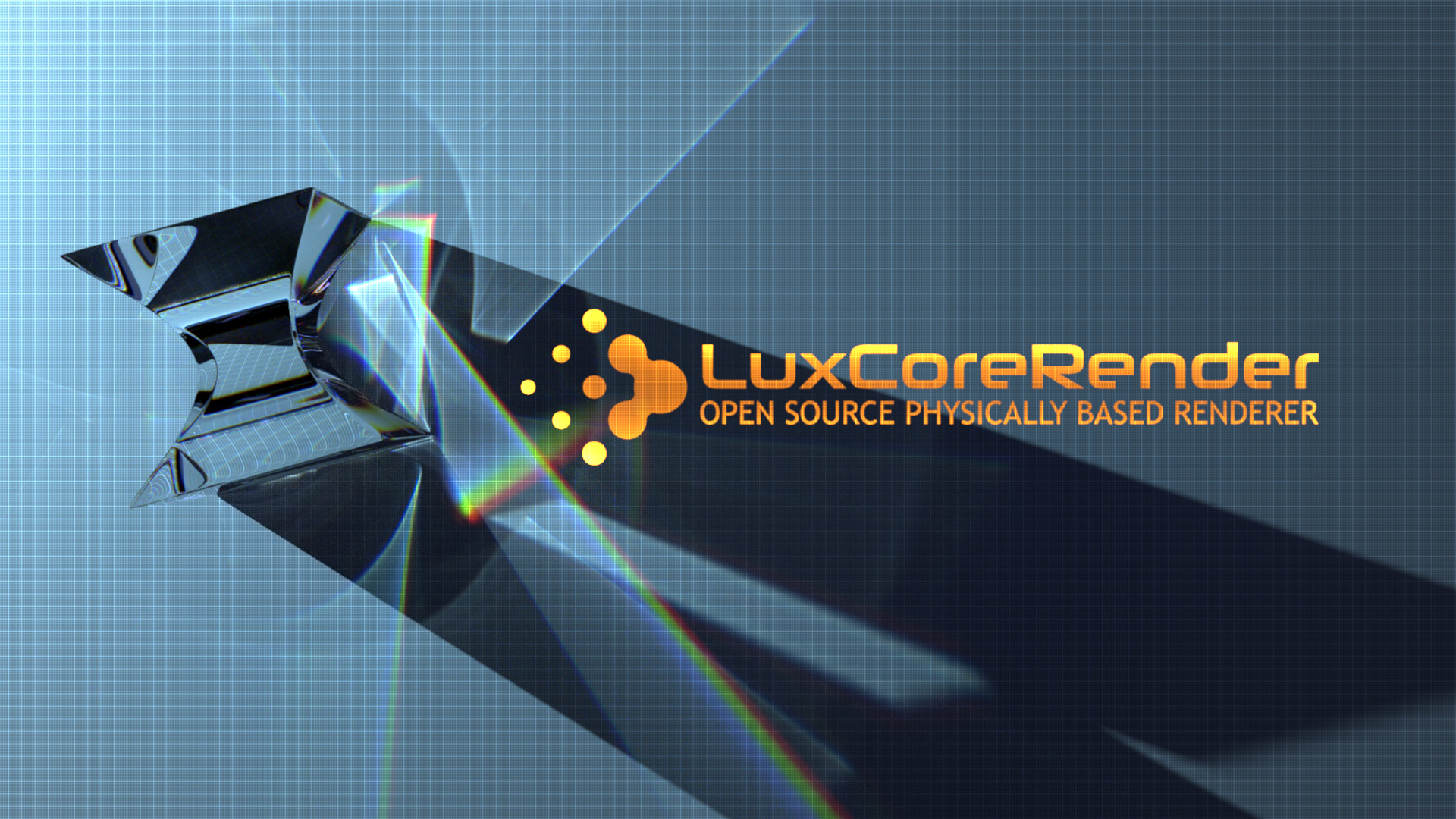https://github.com/luxcorerender/luxcore
LuxCore source repository
https://github.com/luxcorerender/luxcore
3d-graphics bidirectional-path-tracing cuda gpu-computing luxcorerender luxrender opencl optix path-tracing pathtracer ray ray-tracer ray-tracing raytracer raytracing rtx visualization
Last synced: 5 months ago
JSON representation
LuxCore source repository
- Host: GitHub
- URL: https://github.com/luxcorerender/luxcore
- Owner: LuxCoreRender
- License: apache-2.0
- Created: 2017-11-22T14:36:32.000Z (almost 8 years ago)
- Default Branch: master
- Last Pushed: 2025-04-10T05:16:24.000Z (6 months ago)
- Last Synced: 2025-04-10T23:10:32.548Z (6 months ago)
- Topics: 3d-graphics, bidirectional-path-tracing, cuda, gpu-computing, luxcorerender, luxrender, opencl, optix, path-tracing, pathtracer, ray, ray-tracer, ray-tracing, raytracer, raytracing, rtx, visualization
- Language: C++
- Homepage:
- Size: 152 MB
- Stars: 1,208
- Watchers: 51
- Forks: 150
- Open Issues: 95
-
Metadata Files:
- Readme: README.md
- Funding: .github/FUNDING.yml
- License: COPYING.txt
- Authors: AUTHORS.txt
Awesome Lists containing this project
README
### LuxCoreRender

LuxCoreRender is a physically correct, unbiased rendering engine. It is built on
physically based equations that model the transportation of light. This allows
it to accurately capture a wide range of phenomena which most other rendering
programs are simply unable to reproduce.
You can find more information about at https://www.luxcorerender.org
### Building
#### Tool requirements
First, ensure you have a suitable toolchain:
- Windows: MSVC >= 194x _latest version_
- Linux: gcc 14
- MacOS Intel: XCode 15.2
- MacOS Arm: XCode 15.4
Ensure the following software is also installed and available in the PATH:
- Git
- Github CLI (for dependency signature checking: optional, but recommended)
- Python 3
- Conan (`pip install conan`)
- CMake
For Windows, ensure the command line is configured for building (`vcvarsall.bat`).
#### Quick build
```
git clone https://github.com/LuxCoreRender/LuxCore.git
cd LuxCore
git checkout for_v2.10
make deps
make
```
This will download LuxCore source code and LuxCore precompiled dependencies,
configure CMake and start the build.
Nota: second `make` statement can also name a specific target. Examples:
`make luxcore` `make pyluxcore` `make luxcoreconsole` `make luxcoreui`
#### Build type
Build type can be controlled by environment variable `LUX_BUILD_TYPE`.
Available build types are `Release` and `Debug` (case sensitive). Default is `Release`.
#### Other commands
- `make clean`: clean build tree (delete intermediate files)
- `make clear`: remove build tree
- `make config`: configure/reconfigure project
- `make deps`: update dependencies
- `make doc`: build Doxygen documentation
### LuxCore library
LuxCore is the new LuxCoreRender v2.x C++ and Python API. It is released under Apache Public
License v2.0 and can be freely used in open source and commercial applications.
You can find more information about the API at https://wiki.luxcorerender.org/LuxCore_API
### LuxCoreUI
This is the most complete example of LuxCore API usage and it is available in
the [`samples/luxcoreui`](samples/luxcoreui) directory.
To see how it works, just run `luxcoreui` from the root directory:
Linux/MacOS:
```
./out/install/Release/bin/luxcoreui scenes/cornell/cornell.cfg
```
Windows:
```
out\install\Release\bin\luxcoreui scenes\cornell\cornell.cfg
```
(assuming you selected Release as a build type)
### LuxCoreConsole
This is a simple example of a command line renderer written using LuxCore API and it is
available in the [`samples/luxcoreconsole`](samples/luxcoreconsole) directory.
Just run `luxcoreconsole` from the root directory with:
Linux/MacOS:
```
./out/install/Release/bin/luxcoreconsole -D batch.halttime 10 scenes/cornell/cornell.cfg
```
Windows:
```
out\install\Release\bin\luxcoreconsole -D batch.halttime 10 scenes\cornell\cornell.cfg
```
(assuming you selected Release as a build type)
### Authors
See AUTHORS.txt file.
### Credits
A special thanks goes to:
- Alain "Chiaroscuro" Ducharme for Blender 2.5 exporter and several scenes provided;
- Sladjan "lom" Ristic for several scenes provided;
- Riku "rikb" Walve for source patches;
- David "livuxman" Rodriguez for source patches;
- [Daniel "ZanQdo" Salazar](http://www.3developer.com) for Sala scene and Michael "neo2068" Klemm for SLG2 adaptation;
- [Mourelas Konstantinos "Moure"](http://moure-portfolio.blogspot.com) for Room Scene;
- Diego Nehab for PLY reading/writing library;
- [HDR Labs sIBL archive](http://www.hdrlabs.com/sibl/archive.html) and
[SHT Lab](http://shtlab.blogspot.com/2009/08/hdri-panoramic-skies-for-free.html) for HDR maps;
- [Chronosphere](http://chronosphere.home.comcast.net/~chronosphere/radiosity.htm) for Cornell Blender scene;
- [libPNG](http://www.libpng.org) authors;
- [zlib](http://www.zlib.net) authors;
- [OpenEXR](http://www.openexr.com) authors;
- [OpenImageIO](http://www.openimageio.org) authors;
- [Tomas Davidovic](http://www.davidovic.cz) for [SmallVCM](http://www.smallvcm.com), an endless source of hints;
- [GLFW](http://www.glfw.org) authors;
- [ImGUI](https://github.com/ocornut/imgui) authors;
- [Cycles](https://www.blender.org) authors for HSV/RGB conversion code;
- [OpenVDB](http://www.openvdb.org) authors;
- [Eigen](http://eigen.tuxfamily.org) authors;
- Yangli Hector Yee, Steven Myint and Jeff Terrace for [perceptualdiff](https://github.com/myint/perceptualdiff);
- Michael Labbe for [Native File Dialog](https://github.com/mlabbe/nativefiledialog);
- Sven Forstmann's [quadric mesh simplification code](https://github.com/sp4cerat/Fast-Quadric-Mesh-Simplification).
- [SpdLog](https://github.com/gabime/spdlog) authors
### License
This software is released under Apache License Version 2.0 (see COPYING.txt file).